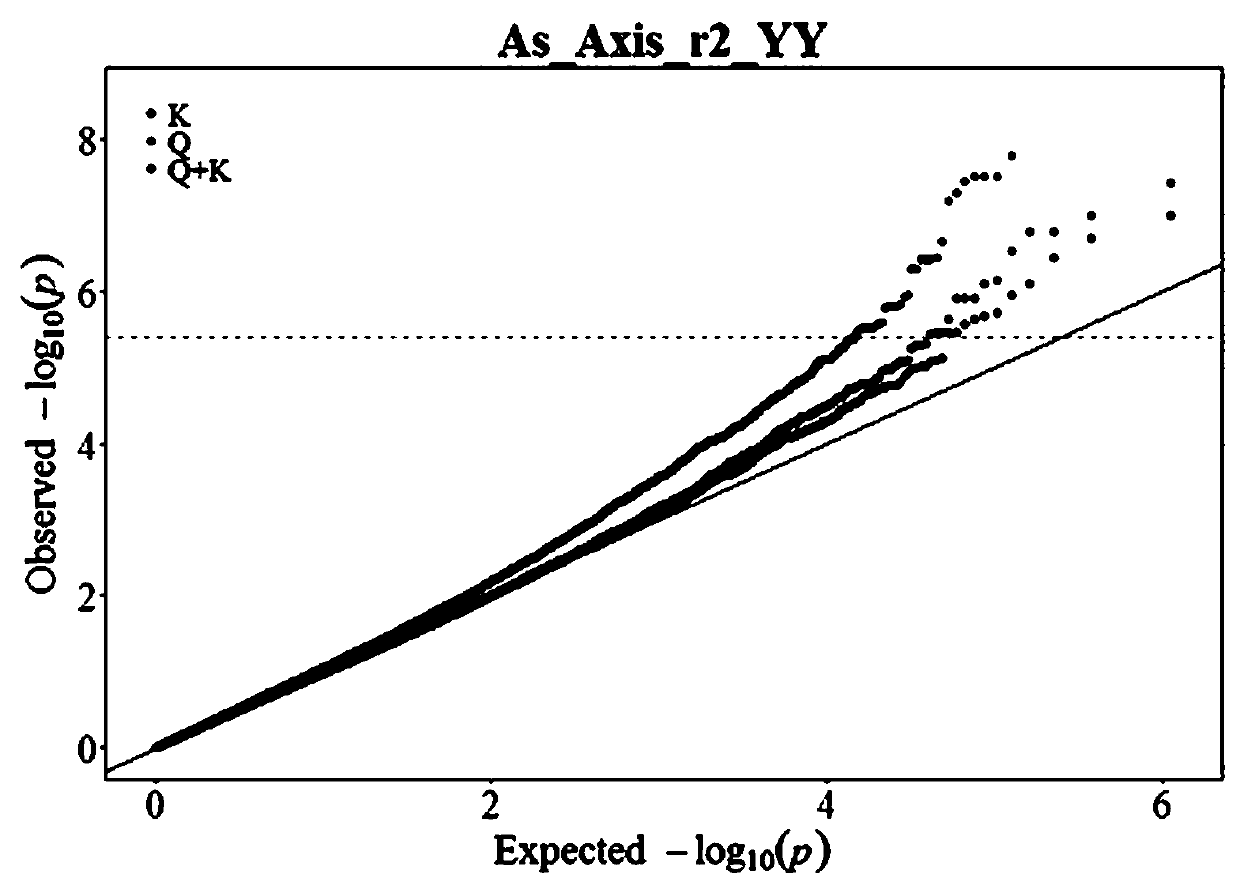Corn arsenic stress resistant gene ZmAsR2 and intramolecular SNP label and application thereof
A technology of resistance gene, corn, applied in the direction of DNA/RNA fragment, application, genetic engineering, etc., can solve the problems of lateral root damage, reduce crop yield and so on
- Summary
- Abstract
- Description
- Claims
- Application Information
AI Technical Summary
Problems solved by technology
Method used
Image
Examples
Embodiment 1
[0027] Example 1: Discovery, identification and cloning of arsenic stress resistance gene ZmAsR2 in maize
[0028] The material used in this study is an associated population composed of 350 representative inbred lines, of which 151 are from temperate regions, 79 are from tropical and subtropical regions, and they were planted in Yongcheng (YC) and Yuanyuan in Henan, China in 2017. In Yanghe Henan Agricultural University Base (YY), in each location, the associated populations were designed with completely randomized blocks, with three repetitions. The row length of each plot is 3 meters, the plant spacing is 0.22 meters, and the row spacing is 0.67 meters. The final planting density is 67,500 plants / ha.
[0029] The mature ears of the associated populations were harvested to determine the accumulation and distribution of arsenic in cobs and bracts. The cobs and bracts of each inbred line in each environment were collected together and dried naturally. The dried cobs and bract...
Embodiment 2
[0041] Example 2: Maize arsenic stress resistance gene ZmAsR2 Intramolecular SNP marker development
[0042] 1. Select the target sequence: select the target sequence containing the SNP site in gramene http: / / ensembl.gramene.org / Zea_mays / Info / Index);
[0043] 2. Design specific primers: design primers in dCAPS Finder 2.0 (http: / / helix.wustl.edu / dcaps / dcaps.html) containing the sequences of 25 nt upstream and downstream of the SNP site, and then insert the 25 nt sequences on the left side of the SNP site 4 bases G are replaced by A, such as image 3 As shown, the enzyme-cleaved recognition site AAGCTT of HindIII appears in the material resistant to arsenic stress.
Embodiment 3
[0044] Example 3: Maize arsenic stress resistance gene ZmAsR2 Application in Maize Breeding for Heavy Metal Stress Resistance and Quality Improvement
[0045] 1. PCR amplification: use the designed primers to amplify the fragment containing the target SNP from the natural population;
[0046] 2. Enzyme digestion: artificially design a HindIII restriction endonuclease recognition site on the primer, and use the restriction endonuclease HindIII to digest the PCR amplification product;
[0047] 3. Separation and identification by agarose electrophoresis: use 4% agarose gel to analyze the digested product and detect its polymorphism. The result is as Figure 4 As shown, this indicates that there is a locus of this SNP in the natural population.
PUM
 Login to View More
Login to View More Abstract
Description
Claims
Application Information
 Login to View More
Login to View More - R&D
- Intellectual Property
- Life Sciences
- Materials
- Tech Scout
- Unparalleled Data Quality
- Higher Quality Content
- 60% Fewer Hallucinations
Browse by: Latest US Patents, China's latest patents, Technical Efficacy Thesaurus, Application Domain, Technology Topic, Popular Technical Reports.
© 2025 PatSnap. All rights reserved.Legal|Privacy policy|Modern Slavery Act Transparency Statement|Sitemap|About US| Contact US: help@patsnap.com



